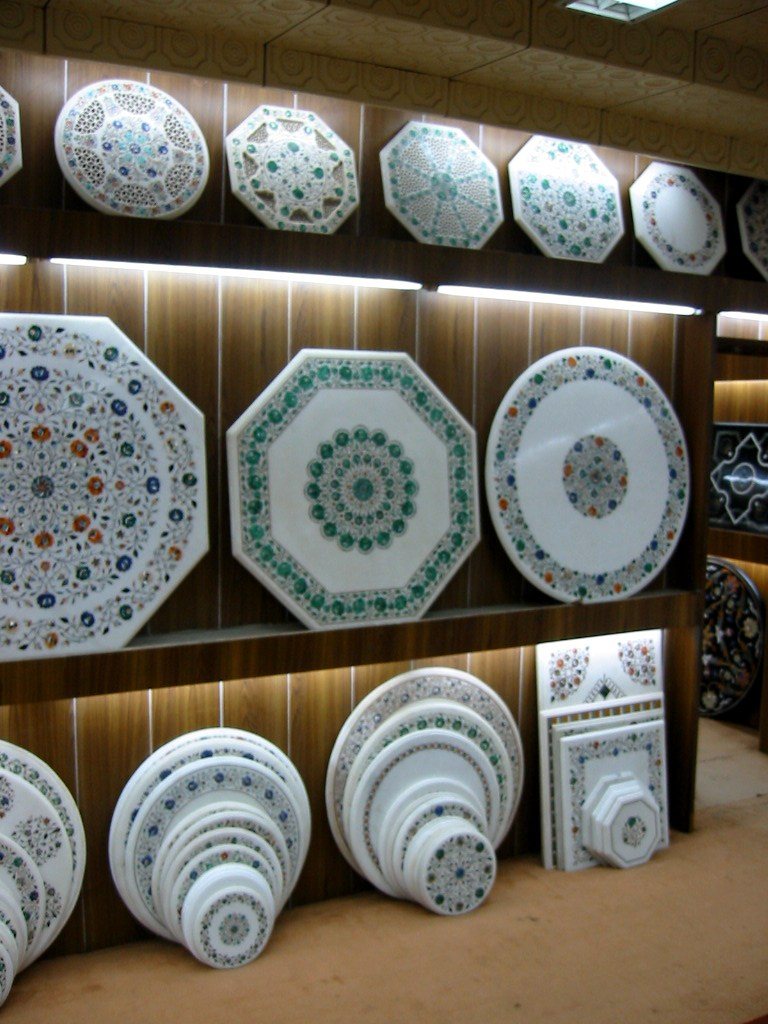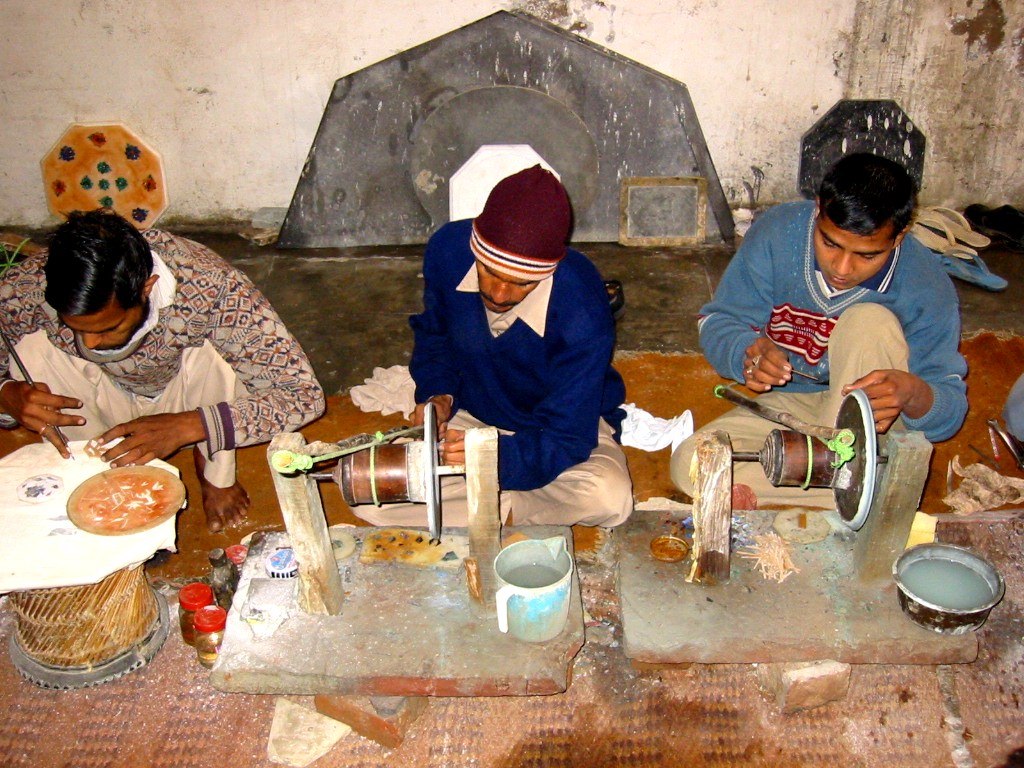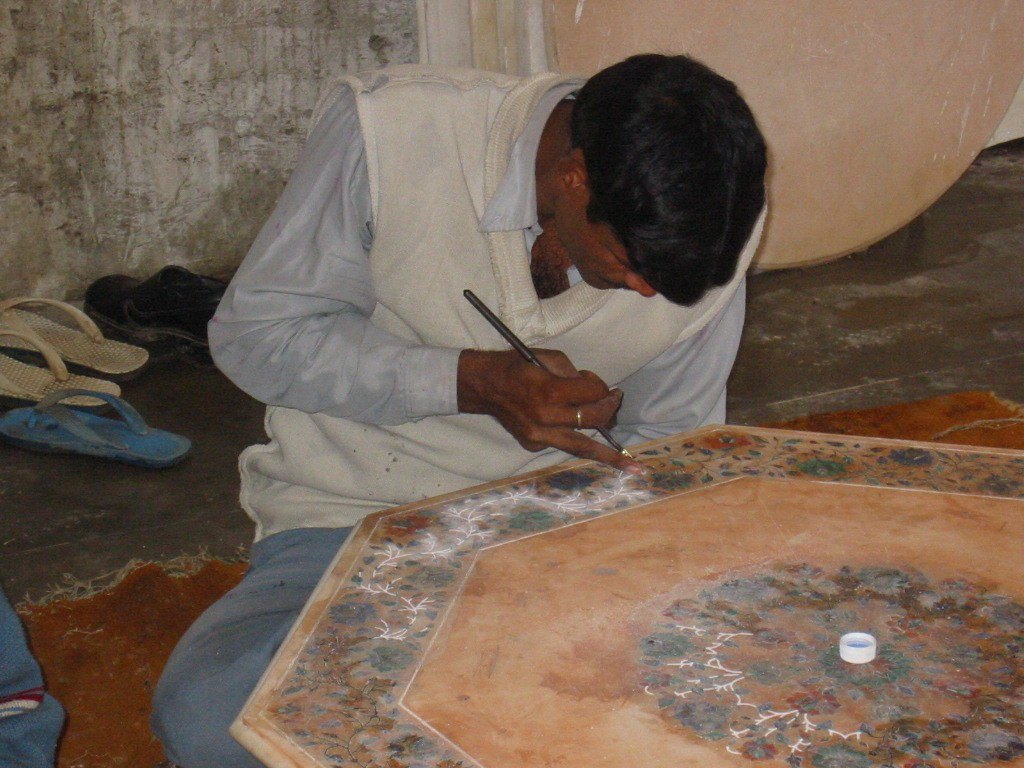

 Returning from
our visit to the Taj Mahal, we were guided to a marble factory by our
guide, under the auspices of using the restroom. What a surprise, a
guide who led us to a friend's or relative's shop! However, not to
worry, as he assured us that this is the "best marble factory in
Agra"--lucky us! At any rate, it was interesting watching how the
designs we had just admired at the Taj Mahal were produced and continue
to be manufactured for consumption around the world. The distinguishing
characteristic between the marble used here and at the Taj Mahal (as
opposed to most marble) is the non-porous nature of Agra marble. It
will not absorb any sort of liquid or particle matter. If the Taj Mahal
had been constructed from porousmarble, given the pollution in Agra,
that storied black Taj Mahal would certainly be a reality by now! The
other interesting feature of the Agra marble was its translucence; even
a thick piece of marble such as a table-top allows light to easily pass
through it. This is what gives the marble its luster. Most of the
marble work we saw at the factory was the pietra dura, or
marble inlaid with gemstones. The tour took us through the production
from start to finish. The photo to the left shows the preliminary
polishing and shaping of the marble pieces, still done on a hand lathe.
The photo to the right shows the crucial step of inlaying the
semi-precious stones into the marble, completing the pietra dura process.
From there the marble pieces go through a final polishing before ending
up on display, as shown in the picture at the top. The video below
shows the polishing and the preparation of the surface for the gemstone
inlays.
Returning from
our visit to the Taj Mahal, we were guided to a marble factory by our
guide, under the auspices of using the restroom. What a surprise, a
guide who led us to a friend's or relative's shop! However, not to
worry, as he assured us that this is the "best marble factory in
Agra"--lucky us! At any rate, it was interesting watching how the
designs we had just admired at the Taj Mahal were produced and continue
to be manufactured for consumption around the world. The distinguishing
characteristic between the marble used here and at the Taj Mahal (as
opposed to most marble) is the non-porous nature of Agra marble. It
will not absorb any sort of liquid or particle matter. If the Taj Mahal
had been constructed from porousmarble, given the pollution in Agra,
that storied black Taj Mahal would certainly be a reality by now! The
other interesting feature of the Agra marble was its translucence; even
a thick piece of marble such as a table-top allows light to easily pass
through it. This is what gives the marble its luster. Most of the
marble work we saw at the factory was the pietra dura, or
marble inlaid with gemstones. The tour took us through the production
from start to finish. The photo to the left shows the preliminary
polishing and shaping of the marble pieces, still done on a hand lathe.
The photo to the right shows the crucial step of inlaying the
semi-precious stones into the marble, completing the pietra dura process.
From there the marble pieces go through a final polishing before ending
up on display, as shown in the picture at the top. The video below
shows the polishing and the preparation of the surface for the gemstone
inlays.